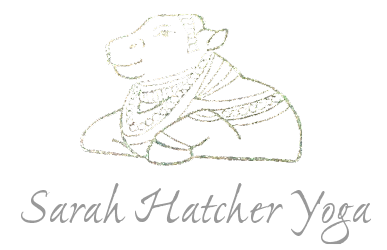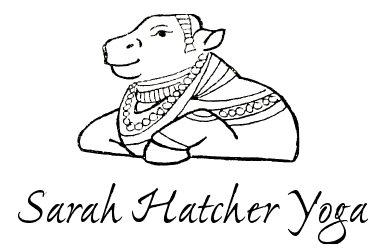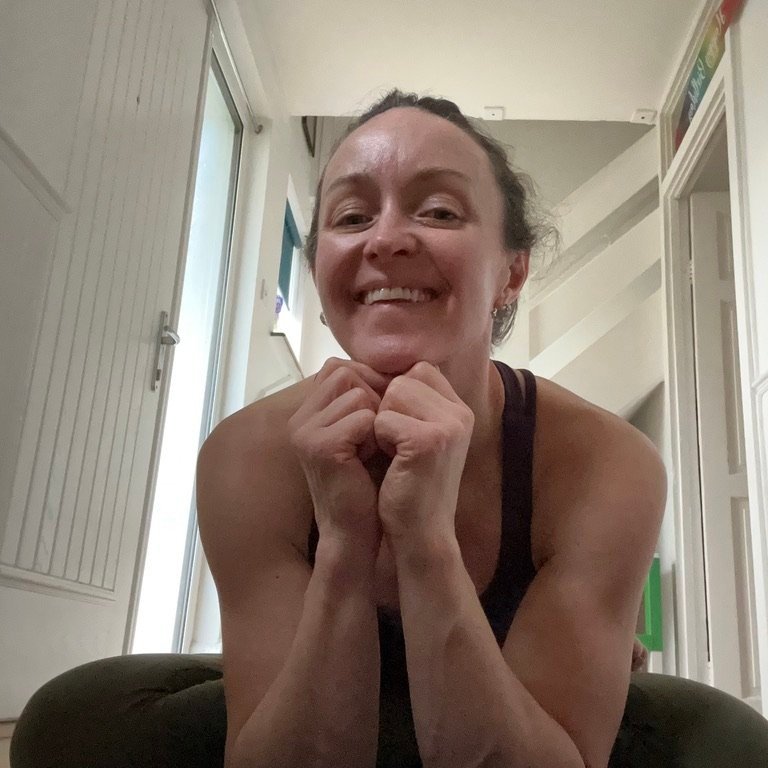Kindness: the Root of Ashtanga Yoga
Happy as: me and my padmasana.
The feelings of betrayal and loss about your yoga practice are more common than you think. We see photos of yogis upside down in these magical moments of pretzel-performance athleticism, however the yogis we may see may not be that blissful. And often we yearn for this stamina and athleticism and grace, and it may never come.
Is yoga really about being advanced in āsana?
I had no idea about the eight limbs and that the term ‘ashtanga yoga’ meant much, much more than just stretching the body pre and post workout. During the first five to ten years of my yoga practice, I thought all you had to do was do the postures and this was ‘yoga’. The revelation ahead of me that yoga was so much more came at the right time, and for some, this comes only when one is ready to hear it. For some, they may never get it.
When I started to study what the “eight limbs of ashtanga yoga” meant, I struggled to do the very first two limbs. Throughout my twenties, I struggled with the yamas and niyamas: the first two limbs of ashtanga yoga are all about your character, your discipline, the “who are you, really? Are you kind? Are you sincere in all that you do? Are you honest in your relationships with others?”
The yamas and niyamas mean ‘external awarenesses and internal awarenesses’ of how you situate yourself in the world around you - how you participate in your daily acts with others and how you treat yourself. They are based upon practical humane principles of non violence, truthfulness, non-stealing and being self aware; also, how you view yourself and take care of yourself; also how you reflect upon your own work and how you participate in your relationship with God (or chosen Faith); lastly this could also be about how you give back to your work, your community, service and your family.
Integrating āsana (postures the third limb) and prāṇāyāma (breathing the fourth limb) and dhyāna (meditation the seventh limb) into our lives combined with following the principles of the first and second limbs (yama and niyama - external and internal awarenesses)..all of this is not an easy task.
One of my teachers, the austere and joyful David Miliotis - he shared with me that in order to incorporate and live our yogic principles such as these - this is synonymous with the principles of ecology: how are we participating in the world around us? How are we putting our best selves into the world and participating in that? Does our āsana and prāṇāyāma practices teach us to put our best selves into all we do?
Going back to the first ten years I studied yogic practice, I had no idea really of what yoga meant. Clearly I missed the lesson as I never quite got the understanding of yama and niyama, the foundational first two limbs of aṣtānga yoga.
During this early stage of my yoga life, my relationships failed often and I thought being ‘strong’ and ‘healthy’ meant you could be ‘tough’ on the outside and you could also treat others the same way. You could leave when you wanted, pick and chose when you wanted.
Somewhere after fifteen years of yogic study, my habits and relationships began to change. Maybe I needed to fail in order to make this shift - or maybe it was a realisation that I was a very good person and I had missed understanding my truest self because I was so attached to the outer self.
Holding on to an old facade of who you are, what you do, what group you are apart of - what blogs you read or what gigs you go to listen to…all this outer realm of showmanship needs to fail in order find the quiet self.
And it took me years! To still the peanut-gallery of chat that I needed to be this or that or perform this or that…what is left when we take all that away is a sincere listening to what has been unheard.
Here I am now, entering my forty-seventh year around the sun, and I am getting better at my relationships around me. Still there are failures. My husband of twelve years failed and again, after four years of being single, I have a new relationship where the root is kindness, compassion, equanimity and joy. These are the supportive pillars of the relationship.
So easily we get wrapped up in our successes and overlook what we are poorly at: take for example your physical practice on the mat. You may be rubbish at yoga but a very kind person and serve others, help people, show up when needed and listen when a friend needs you. If you are in this category you have learned yoga from another life!
Calvin was recently upset when a friend was mean and violent towards him. When we went over the incident and talked about it he said to me, “Mom, I was born kind!” My young son blew my mind. Some are born kind…most people are not.
There are people out there who have never stepped onto a yoga mat and are kinder than most ashtanga yogis that I know.
It is the atmosphere of a yoga shala that is also important to be rooted in this principle of kindness. It may not be though: it could be a place of dangerous consent. When you are in a Mysore room, the teacher offers adjustments and encouragement; teachings and stories as their tools to share the practice of yoga. The teachings themselves are freely given. It has only been since 2017 where the culture of ashtanga yoga has been consent based - some shalas offer ‘No Adjustments’ cards that students can place on their mat before practicing. The norm was that a teacher could adjust you or help you in and out of a posture without even thinking of the repercussions of their touch, how heavy their hand could be or how traumatising it could be to place someone in a pretzel position.
Why this is relevant to kindness as the rooting principle of yoga is that it is non-violence, it is a sincere interest to treat yourself and others well. And a truthful commitment that you are practicing yoga to transform from one who has identified with the outer self - to someone to years to be with the quiet inner self.
And it isn’t at all about the pretzel positions, though they do have therapeutic healing properties on the physical and emotional body. Don’t get me wrong, āsana is a wonderful tool to discover yoga, however don’t let it be the main tool for your practice. And when the āsanas do go away and you find yourself without a relationship to Marichyasana D or Kapotasana, don’t let this loss fool you: you don’t need advanced postures to pacify your nervous system, to soothe your citta vikṣepaḥ (unsteady mind) and to bring calmness to your body and soul.
If you are at a loss in your practice or feel betrayed that you no longer practice like you used to, you may feel inclined to study the Yoga Sutras of Patañjali, or even take a philosophy course online or with your teacher at your shala. And if you aren’t interested in the philosophical side of yoga just yet, keep at your breathing and what little bit of āsana practice you still have left… it may lead you to wanted to enquire more about what yoga really is.
Join me for my upcoming ONLINE Pranayama Course: Breathing Practice - Monday-Thursday 14-17 April, 6:30-7:15 am. Book it here.
Om!


